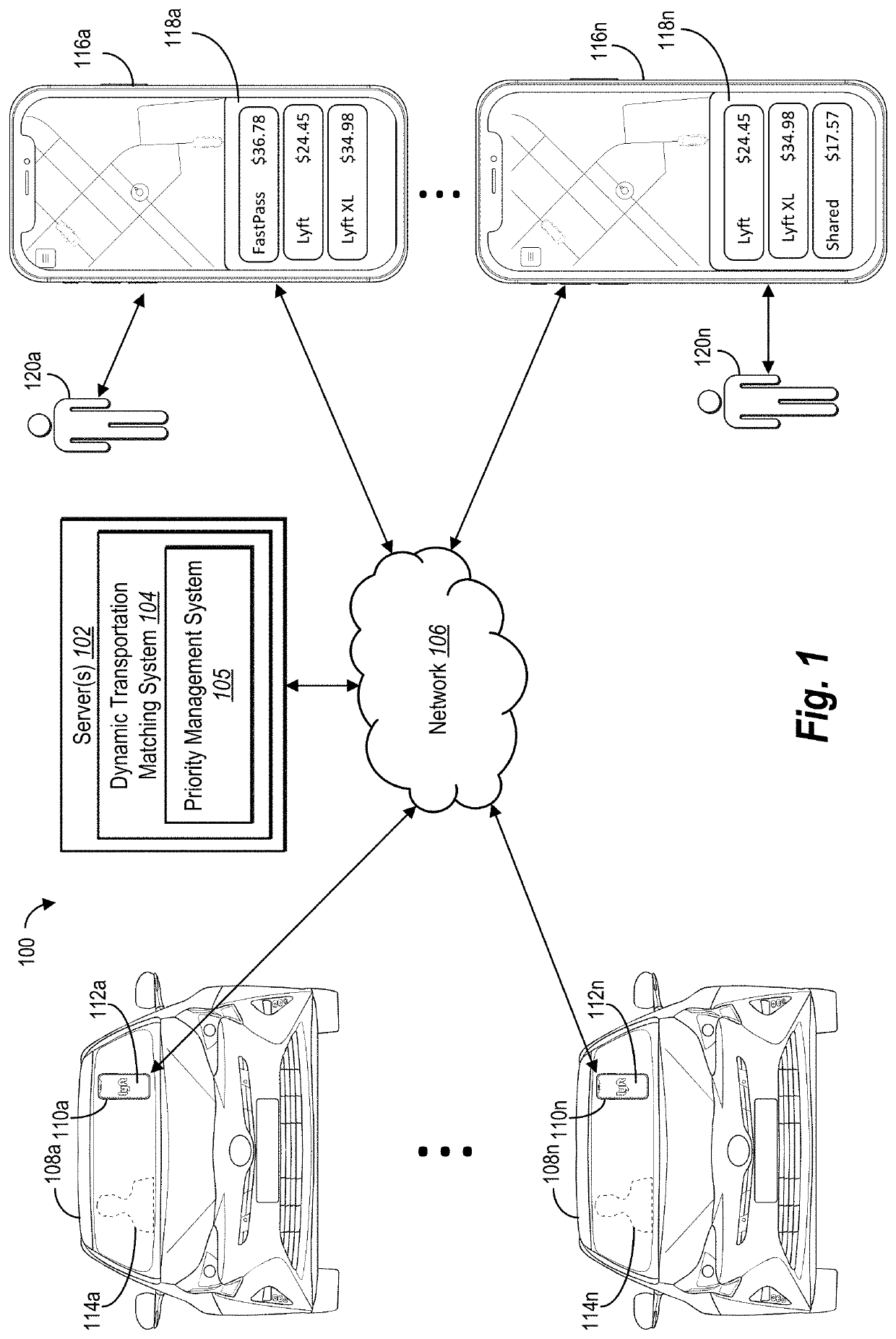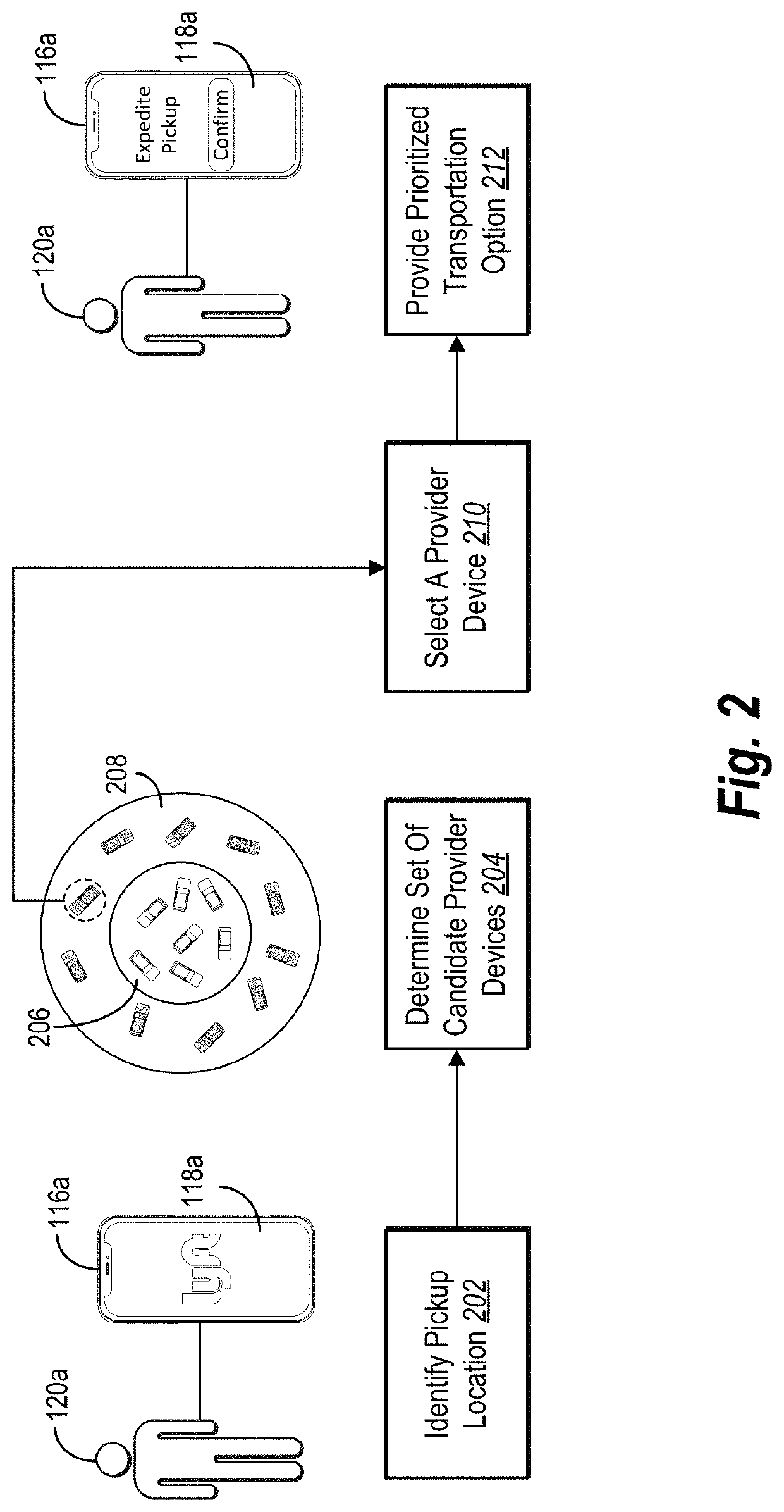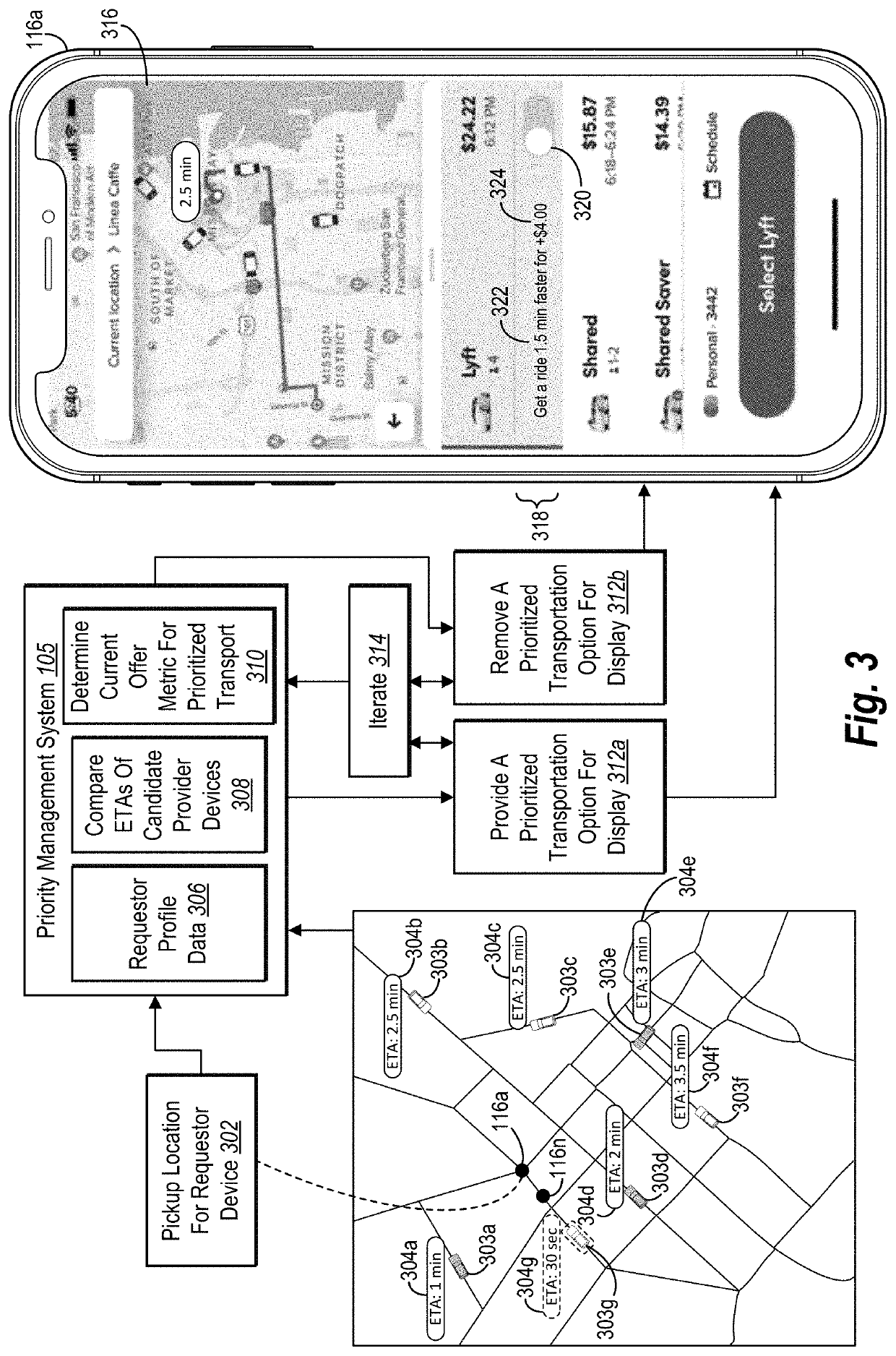Prioritized transportation requests for a dynamic transportation matching system
a technology of priority transportation and dynamic transportation, applied in the field of priority transportation requests for dynamic transportation matching system, can solve the problems of increasing system latency between receiving transportation requests, reducing the estimated time to arrive, and computational models of conventional ride-sharing systems lack algorithmic flexibility to adjust or improve, etc., to achieve the effect of quick pickup
- Summary
- Abstract
- Description
- Claims
- Application Information
AI Technical Summary
Benefits of technology
Problems solved by technology
Method used
Image
Examples
Embodiment Construction
[0020]This disclosure describes one or more embodiments of a priority management system that selects a provider device from among candidate provider devices for prioritized transport of a requestor and dynamically provides a prioritized transportation option as a fast pass to the requestor's computing device for fast transport from pickup to drop-off locations. For example, the priority management system can identify a pickup location for a requestor's device based on a geographic location of the device or user input into the device. To select a provider device for prioritized transport, the priority management system can identify an expanded pool of provider devices for a fast-pass requestor—including (i) unassigned provider devices currently waiting for requestor assignments and (ii) assigned provider devices either en route to pickup locations of assigned requestors or transporting assigned requestors to destination locations. Based on respective estimated time to arrival (ETA) t...
PUM
 Login to View More
Login to View More Abstract
Description
Claims
Application Information
 Login to View More
Login to View More - R&D
- Intellectual Property
- Life Sciences
- Materials
- Tech Scout
- Unparalleled Data Quality
- Higher Quality Content
- 60% Fewer Hallucinations
Browse by: Latest US Patents, China's latest patents, Technical Efficacy Thesaurus, Application Domain, Technology Topic, Popular Technical Reports.
© 2025 PatSnap. All rights reserved.Legal|Privacy policy|Modern Slavery Act Transparency Statement|Sitemap|About US| Contact US: help@patsnap.com



